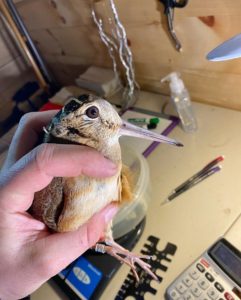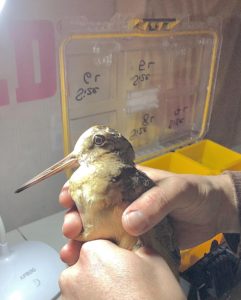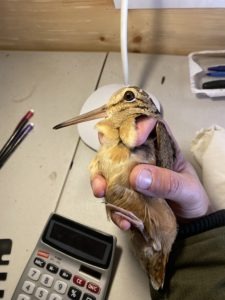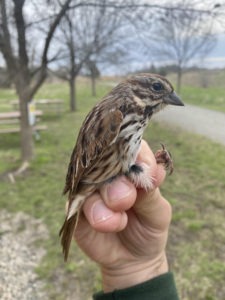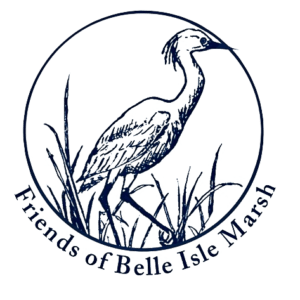On February 24th 2021 we caught an early returning American Woodcock. This was a male bird, calling at night while we were doing one of our night time bird surveys. This year, on 2.24.22 while doing another survey we caught the same male Woodcock, back early once again. Sometimes people ask, well why do you band birds ? Re-captures like this are exactly why. Without banding this bird, it would be just an early returning American Woodcock. However now that we have banded this bird we start to build a picture. This male bird, now at least 3 years old, returns to Belle Isle each spring ( late winter) to claim his territory. This bird was re-captured only a few hundred feet from where he was captured the year prior. We make assumptions about which birds return to their breeding grounds, but with re-captures like this we start to understand that they return to their exact breeding location, utilizing the same exact habitat tract that they used the prior season.
This week we also recaptured a Song Sparrow that was banded over a year ago. Again, Song Sparrows can, and do nest almost anywhere. So this bird, overwintered some place else, and then returned to Belle Isle to breed, only feet from where it was originally banded the year prior.
This type of information really starts to paint a picture of the challenges birds face with human development of natural places. If we have 2 species such as American Woodcock and Song Sparrow that return to the exact same spot the bred the year before, imagine the need for more habitat niche species to return to their places of origin. We treat the bulldozing of a small thicket or the development of a few acres like its no big deal, but in reality it is likely displacing generations of breeding species that might might not be successful somewhere else, or that will have to dispace other birds if they are faced to move.
